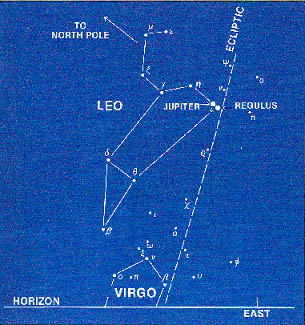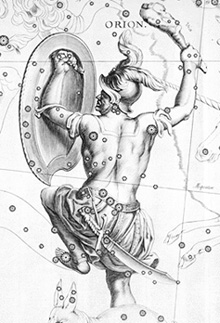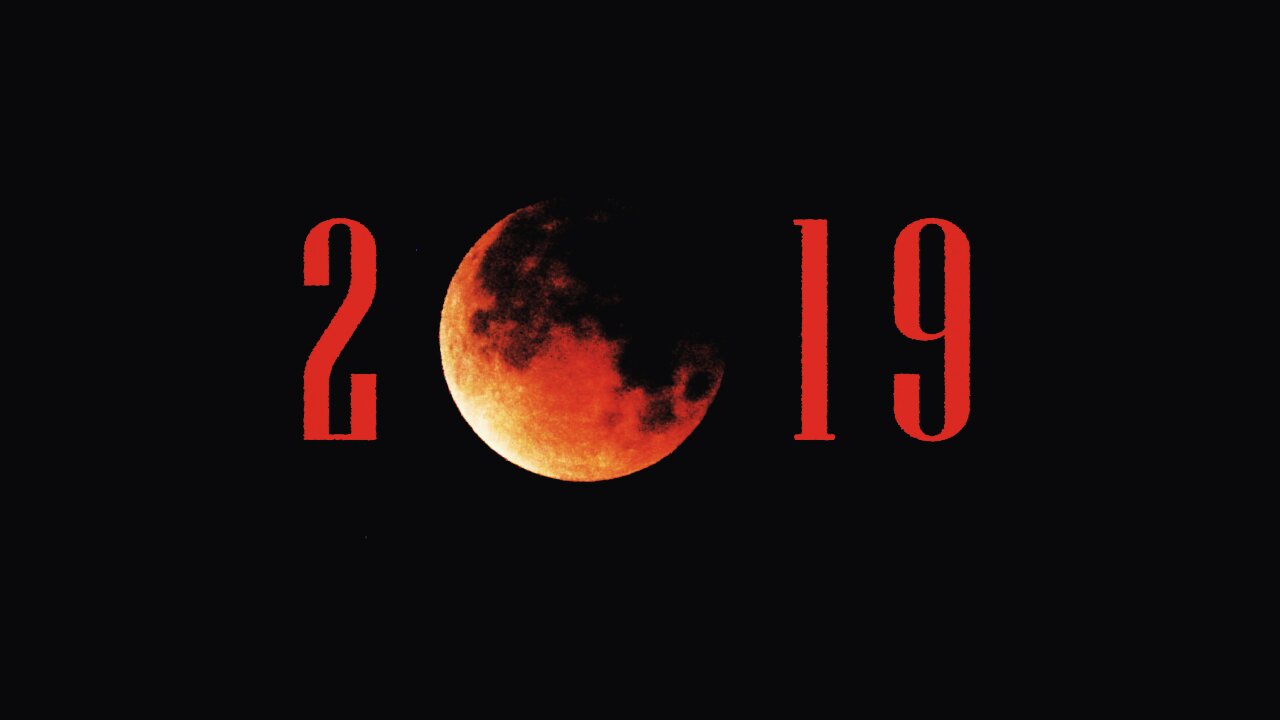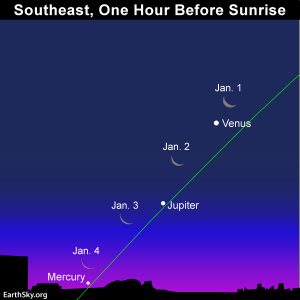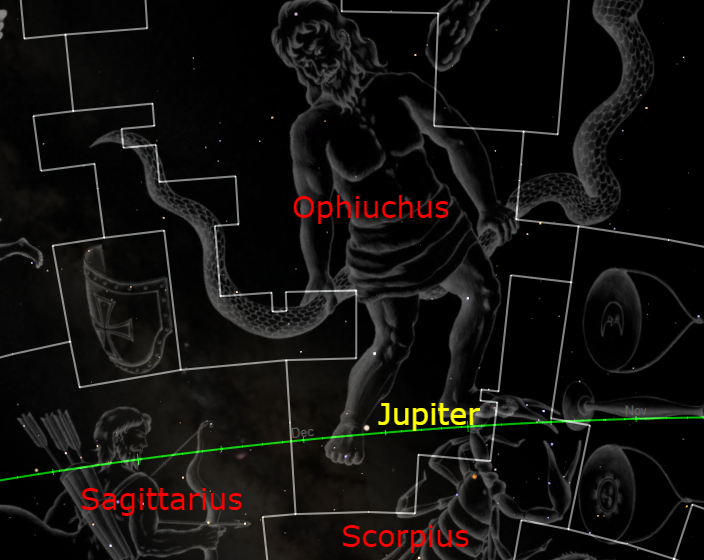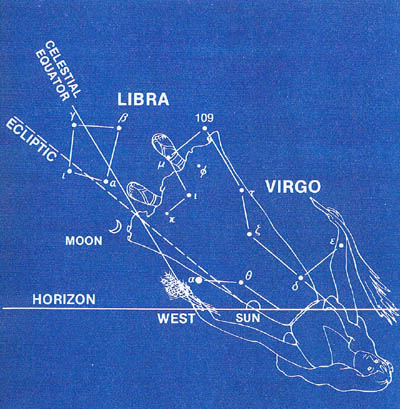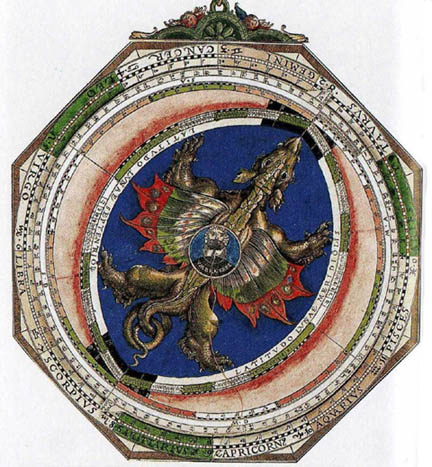
Ancient Monuments of Biblical Archaeo-Astronomy- Part 2.
This study is presented as part of our annual series for Pi Day, March 14th, [3.14] as it pertains to the greatest Monument of the Pi Ratio on the Planet-The Great Pyramid.
Part One of this study provides a basis of Biblical Truth regarding the Monuments of the Giza Plateau, the Great Sphinx and The Great Pyramid. As shown previously, the Great Sphinx is a Messianic Prophecy in Stone and in the stars in reference to the birth of Christ.
This prophecy recorded in the Sphinx, is situated before the Great Pyramid where the Body of the Lion of the Tribe of Judah, is united with the Head of the woman-Virgo. A root study of the word “sphinx” shows it derives from the Greek word “sphiggo,” meaning “to bind closely together“ seen in the binding of the Mazzaroth circle, marked by Christ’s birth in Virgo on Sept. 11th 3 BC, symbolizing his embodiment of the Capstone or Chief Cornerstone of the Great Pyramid. Biblically we find reference of this in the Hebrew [H7218 “rosh,” and its root “roshah;” H7222] in [Ps. 118:22, Isa. 2:2-4, Zech. 4:2-7]. 1 There are also stellar references in Job [Job 38:13-15] that link to the Great Pyramid reflecting its ancient origins since Job is the oldest book in Biblical canon. Job well knew that the Earth spins on its axis in an orbit around the Sun having no visible means of support; (Job 26:7). However the Earth was represented in the mathematics of the Great Pyramid built upon four foundation stones, with it’s chief cornerstone or missing capstone completing the structure as a gnomon geometrically, but most of all Spiritually.
One of the concepts introduced in Part 1 was the idea that the higher principles of the Great Pyramid were seen in a cruder form in the step-pyramids and ziggurats of Babylon and ancient Ur by Cush and his son Nimrod. But whether or not the step-pyramids or the smooth sided Giza pyramids were built first, The Great Pyramid does not belong in the same class as other Pyramids due to it advanced passages, and the precision of its orientation to the cardinal points, with the alignments of its Star-shafts, and many other features that make it the greatest wonder of the ancient world. Also, the comparative engineering skills in the time the Great Pyramid was built, to the more recent pyramids, illustrate an obvious degradation. Since the construction of this singular edifice can still not be matched with all of man’s modern tech, it remains a fruitless effort to try to lump the apex of pyramid building principles into “evolutionary concepts” to try to explain the development of other pyramids, cannot be justified. The Great Pyramid is clearly in a class by itself, even without its various Biblical aspects, adding sacred evidence to its already insurmountable secular, scientific, mathematical, geometric, geodetic, celestial, ad infinitum, make this point without controversy. It is supported in many ancient histories that an enlightened person answering the profile of Enoch– the 7th from Adam was the builder and architect of the Great Pyramid in Egypt, the greatest surviving wonder of the World. This is supported by its sacred elements foreshadowing the Hebrew Temple and Tabernacle below.
Jude 14-15, “And Enoch also, the seventh from Adam, prophesied of these, saying, Behold, the Lord comes with ten thousands of His saints, to execute judgment upon all…
As the primary touchstone and “altar” [Isa. 19] prophesying of the Promised Seed the Great Pyramid sums up the divine standard for celestial, architectural, and geometric principles like no other structure in human history. Other pyramids in various cultures around the world are only a shadow of what the Great Pyramid stands for on the Giza Plateau.
In Job 38:4-7, Earth is figuratively compared to a building. “Where were you when I laid the FOUNDATIONS of the Earth? Declare, if you have understanding. Who laid the MEASURES thereof, if you knowest? or who stretched the LINE upon it? Whereupon are the FOUNDATIONS thereof fastened? or who laid the CORNER STONE thereof; When the MORNING STARS sang together, and all the sons of God shouted for joy?”
Observations revealed in the construction of the Great Pyramid, include: The spherical shape of the Earth incorporating allowances for polar flattening, the length of the earth’s axes of rotation, the precession of the equinoxes, with the earth’s weight among others, as other examples of the design specs that sets the Great Pyramid apart from other pyramids. William Fix in his book “Pyramid Odyssey” showed a direct relation between the Pyramid’s dimensions and the size of the Earth. He found values not only for the Pyramid’s height in direct relation to the Earth’s Polar Radius but also the perimeter at the base sockets in the same ratio for the best figures of the circumference of the Earth at the Equator. Using the most accurate Geodetic surveys he found the Great Pyramid to be a scale model of the Earth at a 1:43,200 ratio, which he accomplished with the novel idea of including the Pyramid’s base into his calculations.
Figure 1. The Pyramid Geometric Model of Planet Earth.
An example of the corruption of principles contained in the Great Pyramid regarding the measures and dimensions of our planet as seen in the ziggurats is referred to by Professor Menon:
“We can deduce that the shape of the the Earth, which appears to have served as a model for these temples, was a terraced pyramid with corners pointing to the South, West, North and East. The Ziggurats at Ur, Uruk and Babylon reached a height of 300 feet. The Ziggurat of Nabu at Barsipku was called the House of the seven bonds of Heaven and Earth, and was in seven stages said to be painted in seven planetary colors.” 2
The emphasis on the planetary bodies seen in these ziggurats is one indicator of the influence of astrology found in these temple-towers inspired and built by Cush and Nimrod. However the Astronomy of the Biblical Patriarchs emphasized the message of certain stars, which are seen in the multiple stellar links exhibited in the star-shafts of the Great Pyramid. As a case in point the most precise orientation to the cardinal points of any man-made structure in history, was mimicked with less accuracy in the ziggurat references above.
The Pyramid is scientifically placed on the earth, with its four sides facing accurately North, South, East and West. It is built in the geographical center of the earth’s land mass, and it stands on the longest land contact Meridian on the earth’s surface. It is designed on the basis of the Pi ratio, as the mathematical ratio governing the entire physical Universe. The root word for ‘Giza’ in Arabic means: edge, or border, and since the Great Pyramid of Giza is is called a boundary stone not only for ancient Egypt but the entire planet, its a fitting title. This exhibits how the Great Pyramid functions as both an altar of sacrifice for the Promised Seed, and as a witness for Jesus Christ.
Figure 2. The Great Pyramid at the center of the world’s land mass.
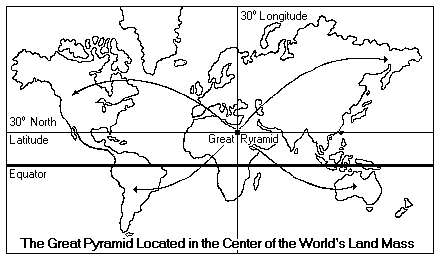
The Pyramid’s design reflected an accurate model of the Earth’s globe, which only holds true at a precise pyramid slope angle of 51 degrees 51 minutes 14 seconds, that just happens to be the Great Pyramid’s exact slope angle, because the ratio of the pyramid height to its base perimeter is exactly 2 pi. In other words as the height of the pyramid relates to its perimeter at its base, so the radius of a circle relates to the circle’s circumference, which is only true at the exact angle of 51 degrees 51 minutes 14 seconds.
Figure 3. The Great Pyramid, the Pi Ratio and Squaring the Circle.
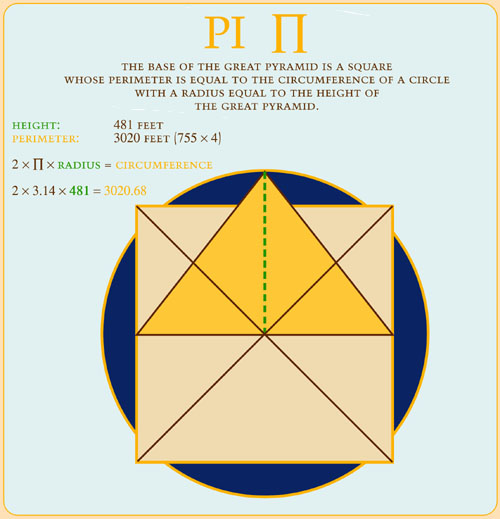
Dr. Joseph Seiss, the author of “The Gospel in the Stars,” and “Great Pyramid: A Miracle in Stone,” and other works, shows how the Pyramid lies in the center of gravity of the continents, dividing earth’s landmass into approximately equal quarters. The north-south axis (31 degrees East of Greenwich) is the longest land meridian, with the east-west axis (30 degrees North) form the longest land parallel on the globe. This makes the Great Pyramid at Giza the only place on the globe where these key terrestrial lines can intersect on the Earth’s surface. Thus, the Great Pyramid is at the very center of the Earth’s landmass. Enoch its builder by revelation from God was shown this advanced knowledge of earth’s geography, allowing him the understanding and foresight of the size, shape and position of each of the continents, granted him a fully formed and comprehensive global view of our planet at an early epoch of human history shared by few others.
By corrupting the perfection of the Great Pyramid in the Patriarchal Age, Cush and Nimrod attempted to obfuscate the stone witnesses of the Celestial Gospel by removing the emphasis of the Promised Seed in the two witnesses of the Great Sphinx and the Great Pyramid, by promoting ziggurats and other pyramids that did not further the witness of the Promised Seed in the Original, but instead promoted the idols of false star religions, while copying many of the sacred geometric and architectural principles of the original, in the context of various idol trinities. Nimrod accomplished this in his self-identification with the decan of Orion as one of the most prominent and easily identifiable star groups in the heavens.
Figure 4. Orion’s Belt Stars mirrored in the Giza Pyramids.

In connection with some of these ancient mystery cults, Orion the mighty Hunter was represented to have died in a very similar way as Osiris, as part of the Egyptian trinity of Isis, Osiris and Horus. Upon the death of Osiris, he was translated to heaven, which “according to the Persian records, show Nimrod deified after his death by the name Orion.” 3 Hislop goes on to document how this link between the deaths of Osiris and Nimrod formed the central theme of not only the idolatry of Egypt, but the death of the gods of many ancient mystery cults like Tammuz, Bacchus and Adonis. Hislop states: “As the women of Egypt wept for Osiris, and the Phoenician and Assyrian women wept for Tammuz, so in Greece and Rome the women wept for Bacchus-the Bewailed or lamented one.” 4 [Ezek. 8:14]
This becomes more interesting when we consider the modern revival of the Orion Correlation Theory by modern theorists like Robert Bauval, show central activities in the star religion of ancient Egypt as funeral rites projecting the souls of the dead to the afterlife in the heavens, linked to certain prominent star groups.
Figure 5.

The Pyramid texts reflect the corruption of the Egyptian Star religion of the original prophecy of the Promised Seed-Jesus Christ in [Gen. 3:15] versus the serpent’s seed, seen in the Orisian trinity as stated below;
Isis comes to thee (Osiris) joyous in thy love, Your seed rises in her, penetrating like Sirius. The penetrating Horus comes forth from thee in his name of Horus-who-is-in-Sirius…5
Another example of this idolatrous substitution is found in the Akkadian language in reference to the Constellation Aries. The Akkadian name for Aries was Bara-ziggar; “Bar” meaning “altar” or sacrifice, and “ziggar” means right making; so the full name is the righteous sacrifice. 6
This refers to the corruption not only of the Pyramid’s purpose as a witness in Stone to Jesus the Promised Seed, but also its application to the Celestial Gospel as the only Testament to God’s Word in the Patriarchal Administration. Nirmood’s influence at the basis of this corruption can still be seen today in the Ziggurat of Nineveh still known as Birs Nimroud, of which Bullinger provides a description from Chesney:
“About 5 miles S.W. of Hillah, the most remarkable of all ruins the Birs Nimroud of the Arabs, rises to a height of 153 feet above the plain from a base covering a square of 400 feet or almost 4 acres. It is constructed of kiln dried bricks in seven stages, to correspond with the planets to which they are dedicated; the lowermost black, the color of Saturn, next Orange for Jupiter, the third Red for Mars and so on. These stages were surmounted by a lofty tower, on the summit of which we are told, were signs of the zodiac and other astronomical figures; thus having [as should have been translated] a representation of the heavens, instead of a top which reached unto heaven.” 7
Figure 6. The Star shaft alignments of the Great Pyramid.

The passage and star shaft system’s of the Great Pyramid and their stellar alignments are far more complex and developed than those of any other pyramids. The Pyramid’s Descending Passage, was aligned to the the star Thuban of Draco, representing the evil influences of the dragon star that embodied the North Pole at the time the Great Pyramid was built, [Job 26:13] the star alignments serving as a contributing factor to the high precision of the pyramid’s orientation to the cardinal points of the compass. Here the dragon led the way unto destruction and death, on the Descending Passage bound for the Pit under the base of this pyramidal structure. In Deut. 30:15-20 just as God has set before men the ways of life and death, so He has incorporated these paths in the Ascending and Descending Passages of the Great Pyramid. As one path descends in this passage of the Great Pyramid, nearly a quarter of the way down this Descending Passage we come upon the Ascending Passage, marking a new path of life, out of sin representing God’s salvation for mankind-first for Israel in the Exodus and later in the Age of Grace for the Church in Christ.
Figure 7. The Precession of the Pole star from Thuban of Draco to Polaris as seen in the Northern Star Shafts of the Great Pyramid.
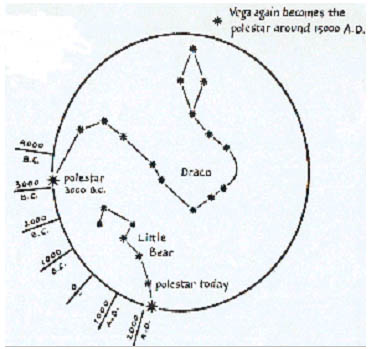
The Ascending Passage ultimately leads to what is known as the King’s Chamber, where we find one of the earliest examples of a Pythagorean triangle – A 3,4,5 triangle. The ratio of the north or south wall diagonal to the length of the chamber, to the cubic diagonal of the chamber is exactly in the ratio of 3:4:5. The King’s Chamber is also unique because it matches the dimensions of the holiest of all in the Temple and Tabernacle of Israel. Amazingly this correspondence to the the sacred design architecture of the holiest aspects of the Hebrew Temple is established in the coffer of the King’s Chamber mirroring the measures of the Ark of the Covenant [Ex. 25:10], showing the same divine Designer behind the sacred architecture of the Hebrew Temple and Tabernacle and the Great Pyramid. This shows another aspect of the prophecies of the Great Pyramid, as it embodies the sacred dimensions of the same heavenly vision of the Tabernacle and Solomon’s Temple, millenia prior to their existence. As part of the King’s Chamber on the Pyramid’s Ascending Passage, it also speaks to the Believer’s of the Church Age, which are found in the Apostle’s Scriptural doctrine, as Peter states while addressing the Sanhedrin;
[Acts 4:10-12]
10 let it be known to you all, and to all the people of Israel, that by the name of Jesus Christ of Nazareth, whom you crucified, whom God raised from the dead, by Him this man stands here before you whole. 11 This is the ‘stone which was rejected by you builders, which has become the chief cornerstone.’ 12 Nor is there salvation in any other, for there is no other name under heaven given among men by which we must be saved.”
In spite of what Oprah tells us, I will stick with the Apostle Peter on this one! Peter continues this theme of the Great Pyramid in his first Epistle;
[1 Peter 2:4-8]
3 if indeed you have tasted that the Lord is gracious. 4 Coming to Him as to a living stone, rejected indeed by men, but chosen by God and precious, 5 you also, as living stones, are being built up a spiritual house, a holy priesthood, to offer up spiritual sacrifices acceptable to God through Jesus Christ. 6 There-fore it is also contained in the Scripture, “Behold, I lay in Zion A chief corner-stone, elect, precious, And he who believes on Him will by no means be put to shame.” 7 Therefore, to you who believe, He is precious; but to those who [b]are disobedient, The stone which the builders rejected Has become the chief Corner-stone, 8 and “A stone of stumbling And a rock of offense.” They stumble, being disobedient to the word, to which they also were appointed. 9 But you are a chosen generation, a royal priesthood, a holy nation, His own special people, that you may proclaim the praises of Him who called you out of darkness into His marvelous light.
We have spoken of the Great Pyramid as one of two of the greatest witnesses to Christ, in Stone . In the language of this Chief Cornerstone these truths come to bear. It is a well known fact that the capstone of the Great Pyramid is missing, which prophesy’s of its need for completion, as we await the return of Christ. As the name indicates, the capstone is placed at the apex of the pyramidal structure, the rightful place of the head-stone, at the top, embodying the name above all names that every knee shall bow to and every tongue confess-that of Jesus Christ as Lord, a place where only the capstone fits.
The capstone is also called a “pyramidion” because it is a perfect model in miniature, completing the entire pyramid structure. The Apostle Paul also wrote in the Epistle of Ephesians, chiming in with Peter in light of the “living Stones” of the Church Age; [Eph.2:20-22]
19 Now, therefore, you are no longer strangers and foreigners, but fellow citizens with the saints and members of the household of God, 20 having been built on the foundation of the apostles and prophets, Jesus Christ Himself being the chief cornerstone, 21 in whom the whole building, being fitted together, grows into a holy temple in the Lord, 22 in whom you also are being built together for a dwelling place of God in the Spirit.
As the measures and angles of this Chief Cornerstone are unique, they set the angles and geometry for the entire structure, so that “all the building fitly framed together,” grows in the unity of the head of the spiritual body of the Church in Christ. Hereby we dwell in the presence of the Almighty in Christ for all eternity. It was on the first day of the opening of the Age of Grace, on the day of Pentecost in 28 AD, when the twelve Apostles standing in the Herod’s Temple of Stone, first spoke in tongues, [Acts 2:1-4], that the first stones of this Great spiritual edifice of the Church of Grace were laid, by God’s Hand. Since that day this awesome temple grows day-by-day until the Lord Jesus Christ comes to completely redeem, deliver and endow the members of his spiritual body-the church with our new incorruptible bodies for eternity, [I Cor. 15:51-55].
Footnotes
1. Strong’s Concordance, [H7218, H7222] James Strong
2. Early Astronomy and Cosmology-CPS Menon
3. The Two Babylons, Alexander Hislop, ppg. 56-57
4. IBID ppg. 160-161
5. The Orion Mystery, Robert Bauval and Adrian Gilbert
6. Witness of the Stars, E.W. Bullinger [p.105]
7. IBID, [p.11]
Comments on Facebook
To those of you interested in commenting on this post please go to our Facebook Group Page
https://www.facebook.com/groups/bibleastronomy

